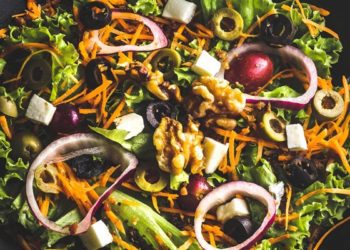Cholesterol-containing lipid particles protect mice from lethal bacterial toxins
1. Liposomes, small spheres composed of lipids, were engineered to contain artificially high cholesterol (Chol) concentrations to promote preferential binding of bacterial toxins to liposomes as opposed to cells.
2. Liposomes protected cells and mice from lethality induced by particular bacterial toxins.
Evidence Rating Level: 1 (Excellent)
Study Rundown: Bacterial infections are usually treated with antibiotics, which kill most bacteria and often lead to the evolution of new, drug-resistant bacterial strains. In this work, the authors capitalized on the affinity of many bacterial toxins for Chol in the cell membrane to develop an alternative method for treating infection.
In this study, infected cells and mice were treated with liposomes composed of the lipids sphingomyelin (Sm) and Chol at varying ratios. Liposome Chol concentrations that were higher than those found in normal animal cell membranes led to preferential binding of the bacterial toxins to the liposomes. Chol:Sm liposomes protected several cell types from cell death following exposure to a variety of purified bacterial toxins. Monocyte survival after exposure to human pathogens, including particular strains of S. pyogenes, S. aureus, and S. pneumoniae, was dependent on both the specific pathogen and liposomes administered, suggesting that tailored liposome cocktails could be used to sequester multiple toxins released by different bacteria strains. Researchers found that liposome injection within ten hours of a lethal bacterial infection significantly improved mouse survival rates and reduced bacterial levels in blood. Liposome addition also appeared to decrease lung edemas in mice, which are induced by bacterial infection and the subsequent inflammatory response.
The short timescale in which liposome treatment was effective (within ten hours of bacterial infection) limits the translational potential of this work to treatment of human infection. However, these findings remain applicable to risky medical procedures, such as organ transplants, where sepsis is anticipated. Overall, this study introduces a novel, promising treatment method for a wide variety of bacterial infections that bypasses the consequence of bacterial drug resistance.
Click to read the study in Nature Biotechnology
Relevant Reading: New concepts in the pathogenesis, diagnosis and treatment of bacteremia and sepsis
In-Depth [animal study]: In in vitro investigations, monocyte survival was assessed by cell counting for 5-14 days following exposure to bacterial toxins. Chol:Sm liposomes with a 66% Chol content completely protected monocytes from total lethality induced by pneumolysin (PLY), phospholipase C (PLC), tetanolysin, streptolysin O, or α-hemolysin. Alternatively, endothelial and epithelial cells were transfected with a fluorescent indicator in the cytosol, and cell death was measured by loss of fluorescent signal indicating cell lysis by the toxins. Chol:Sm liposomes protected these cells from death following exposure to PLY or PLC. Monocytes exposed to bacterial culture supernatant, rather than purified toxins, were rescued from cell death in a manner dependent on both liposome content and specific pathogen exposure. Some strains required combinations of liposomes that contained varying lipid concentrations to completely rescue cell survival. For example, a Chol:Sm/Sm-only liposome cocktail fully protected monocytes following exposure to a strain of S. aureus, while Chol:Sm liposomes alone were only partially effective.
Several tens of mice were used to evaluate the protective quality of the liposomes in vivo. Chol:Sm/Sm-only liposome treatment of 100 mg/kg at 6 and 10 hours following intravenous injection with lethal S. pneumoniae doses increased mice survival rates (p<0.001 and p<0.05, respectively), and decreased blood bacterial levels (p<0.001 and p<0.01, respectively). In the case of lethal infection with S. aureus, treating mice with >100 mg/kg of Chol:Sm/Sm-only liposomes resulted in survival of all mice by 192 hours post infection (p<0.001). Lung edema was evaluated in two different ways, including comparing the wet and dry lung weights, and was reduced with liposome treatment (p<0.001).
More from this author: Noninvasive imaging method detects and evaluates size of metastases, Inhibition of key enzymes in the animal brain reduces drug relapse behavior
Image: PD
©2012-2014 2minutemedicine.com. All rights reserved. No works may be reproduced without expressed written consent from 2minutemedicine.com. Disclaimer: We present factual information directly from peer reviewed medical journals. No post should be construed as medical advice and is not intended as such by the authors, editors, staff or by 2minutemedicine.com. PLEASE SEE A HEALTHCARE PROVIDER IN YOUR AREA IF YOU SEEK MEDICAL ADVICE OF ANY SORT.






